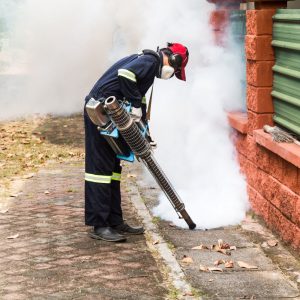
It usually starts with a near miss. A branch comes down during a windy afternoon, landing uncomfortably close to a walkway, or someone raises concerns about a leaning tree near the staff car park. In many cases, these are dismissed as one-offs. But more often than not, they’re signs of a bigger issue: unmanaged tree risk.
Trees are assets to any site, but without regular checks, they can quietly become liabilities. That’s where a tree safety audit comes in. Far from a bureaucratic box-tick, it’s a practical, preventative tool that helps keep people safe, sites compliant, and problems from escalating into emergencies.
What is a tree safety audit?
A tree safety audit is a structured assessment carried out by a qualified arborist to identify potential risks posed by trees on a site. It’s not just a walkaround with a clipboard—it’s a methodical process that evaluates the health, structural integrity, and surroundings of each tree, with safety as the primary focus.
Auditors typically use a zoning approach, prioritising areas with high foot traffic or building proximity, such as entrances, footpaths, playgrounds, or car parks. They assess each tree visually for signs of decay, disease, deadwood, or instability, and log findings into a report with clear risk ratings and recommended actions.
Think of it as a risk register for trees, backed by professional insight and grounded in duty-of-care best practice.

Why tree audits matter for duty of care
Whether you’re managing a school, a business park, or a public space, you have a legal responsibility to keep the site safe. That includes the trees. Under the Occupiers’ Liability Acts of 1957 and 1984, landowners and site managers have a duty of care to take reasonable steps to prevent foreseeable harm. If a tree falls and causes injury—or worse—the question will quickly turn to whether the risk could have been identified and mitigated.
A professional tree safety audit is one of the clearest ways to demonstrate that you’ve taken that duty seriously. It creates a documented trail of assessments, recommendations, and actions. If something does go wrong, you’re far better protected. And if nothing does, which is the goal, you’ll have peace of mind knowing you’ve done things properly.
Key benefits beyond risk reduction
While safety is the obvious driver, the benefits of a tree safety audit go much further. For starters, it supports better long-term planning. Knowing which trees are healthy, which need attention, and which may need replacing allows you to budget with confidence rather than scrambling for emergency funds after a storm.
Tree audits also dovetail neatly with broader sustainability and ESG goals. They provide measurable data on your living assets, which is helpful for environmental reporting or biodiversity initiatives. For property managers, audit data can strengthen planning applications or lease agreements by showing proactive site care.
And then there’s perception. Well-managed trees reflect well on an organisation, particularly for schools, healthcare settings, or retail spaces where public confidence is key. A tidy tree is one thing. A safe, documented tree is another.
How often should you carry out a tree safety audit?
There’s no universal rule for how often you should audit your trees—it depends on the setting, usage, and species involved. High-use areas like playgrounds, car parks, or site entrances should be assessed more frequently than remote woodland fringes.
As a general guide, formal audits are recommended every 12 to 24 months, with informal inspections carried out more regularly by site staff or grounds teams. Trees showing signs of stress, decay or previous damage may require more frequent monitoring.
The key is consistency. A tree audit isn’t a one-off tick box, it’s part of a wider commitment to managing your site responsibly, year after year.
What to expect from a professional audit
A professional tree safety audit typically begins with a site walk-through, led by a qualified arborist. Trees are assessed visually using a methodical system, often mapped out by zones and numbered for traceability.
You’ll receive a detailed report outlining the condition of each tree, any potential hazards, recommended works (such as pruning, removal, or monitoring), and suggested timescales for reinspection. Photographic evidence and location plans may also be included, especially for larger or high-risk sites.
Choosing the right professional matters. Look for arborists with LANTRA, PTI (Professional Tree Inspection), or ISA certification. A good report won’t just flag problems—it will help you plan, prioritise, and prove that you’re managing your trees responsibly and professionally.
Conclusion – a small step with big safeguards
A tree safety audit might not seem urgent, until it is. One fallen limb, one legal claim, or one preventable injury can change the conversation overnight. But audits aren’t just about avoiding worst-case scenarios, they are about instilling confidence, clarity, and control into how your site is managed.
For the cost of a routine assessment, you gain peace of mind, legal protection, and a clear plan for the health and longevity of your trees. It’s a small step that protects people, your property, and your reputation.






